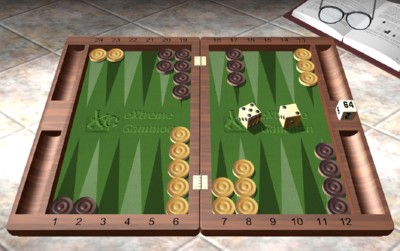Cash game. Center cube. White on move.

White to play 5-2
The early part of a backgammon game is dominated by two key goals: hit blots and make points. The easy moves are the ones where you can only do one good thing. The hard moves are those where you can do two good things, and you have to make a tough choice, or no really good things, and you have to decide how best to arrange your checkers for future action.
This position is an example of the latter situation. White can’t make any points with a 5-2 roll, and his only hit, 6/1*, doesn’t accomplish anything good. So he has to shuffle his checkers around somehow and get ready for action next turn.
My cardinal rule in these positions comes from the medical profession: “First, do no harm.” In backgammon terms, that means don’t try plays that make your distribution worse rather than better. Here, I’ll reject 13/8 for just that reason. After 13/8, White has gone from a nice position with a spare on both the 13-point and 8-point to a position with a small stack on the 8-point and no spares on the midpoint. That’s not an improvement, so let’s reject all the plays involving 13/8.
Since we’ve already rejected the awful 6/1*, we’re now left with just two candidates: 23/18 13/11 and 23/16. Running all the way out and trying to escape with 23/16 is the safer play: fewer ways to get hit and fewer blots. Since Black has a better board right now, extra safety is not a bad idea.
The alternative, 23/18 13/11, tries for a bit more. White creates a new blot and exposes himself to more hits in return for a chance to make a great anchor on Black’s bar-point. The problem with the move is a bit subtle. The purpose of the new blot on the 11-point is to give White some extra chances to make his 5-point with rolls like 6-3 and 6-1. However, White won’t have a chance to execute those threats because he’ll most likely be on the bar next turn. Black is going to hit on his bar-point with all his ones and sixes, and he will probably hit on his ace-point with fives as well. In fact, Black’s only non-hitting numbers are 4-3 and 4-4, and 4-3 actually makes White’s 5-point, rendering the blot on the 11-point somewhat useless!
Here’s a quick rule of thumb: a move like 13/11 is excellent when you have an anchor somewhere, so the blot on the 11-point is a useful builder immediately. It’s not so useful when a hitting contest is about to ensue on the other side of the board. As long as the battle for Black’s bar-point is unresolved, a blot on the 11-point is really just an extra target. Play the simple 23/16 instead and try to escape a checker.





